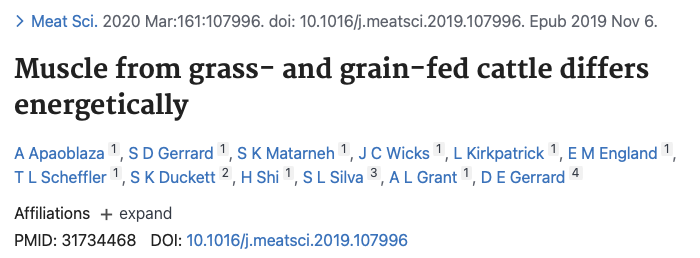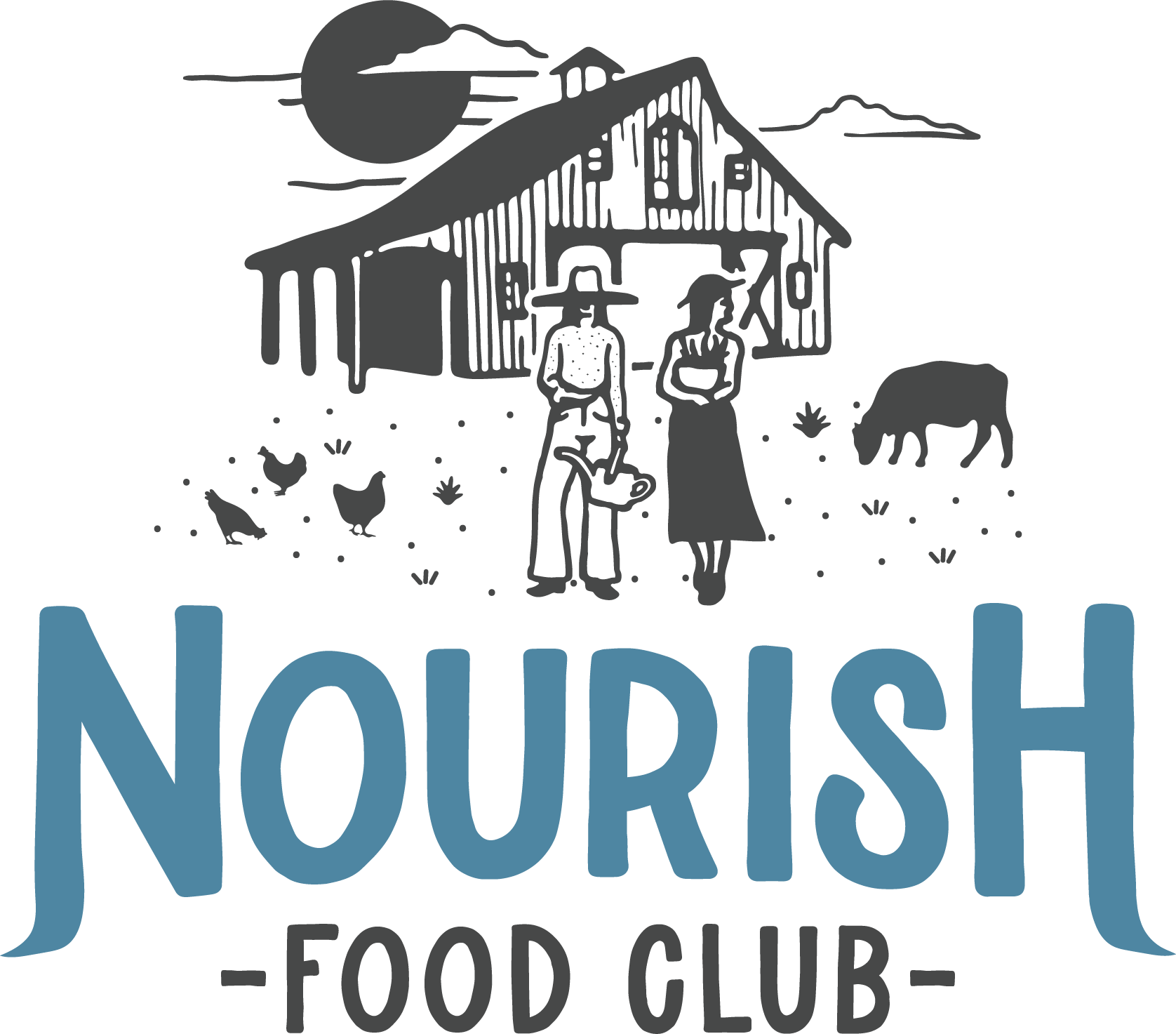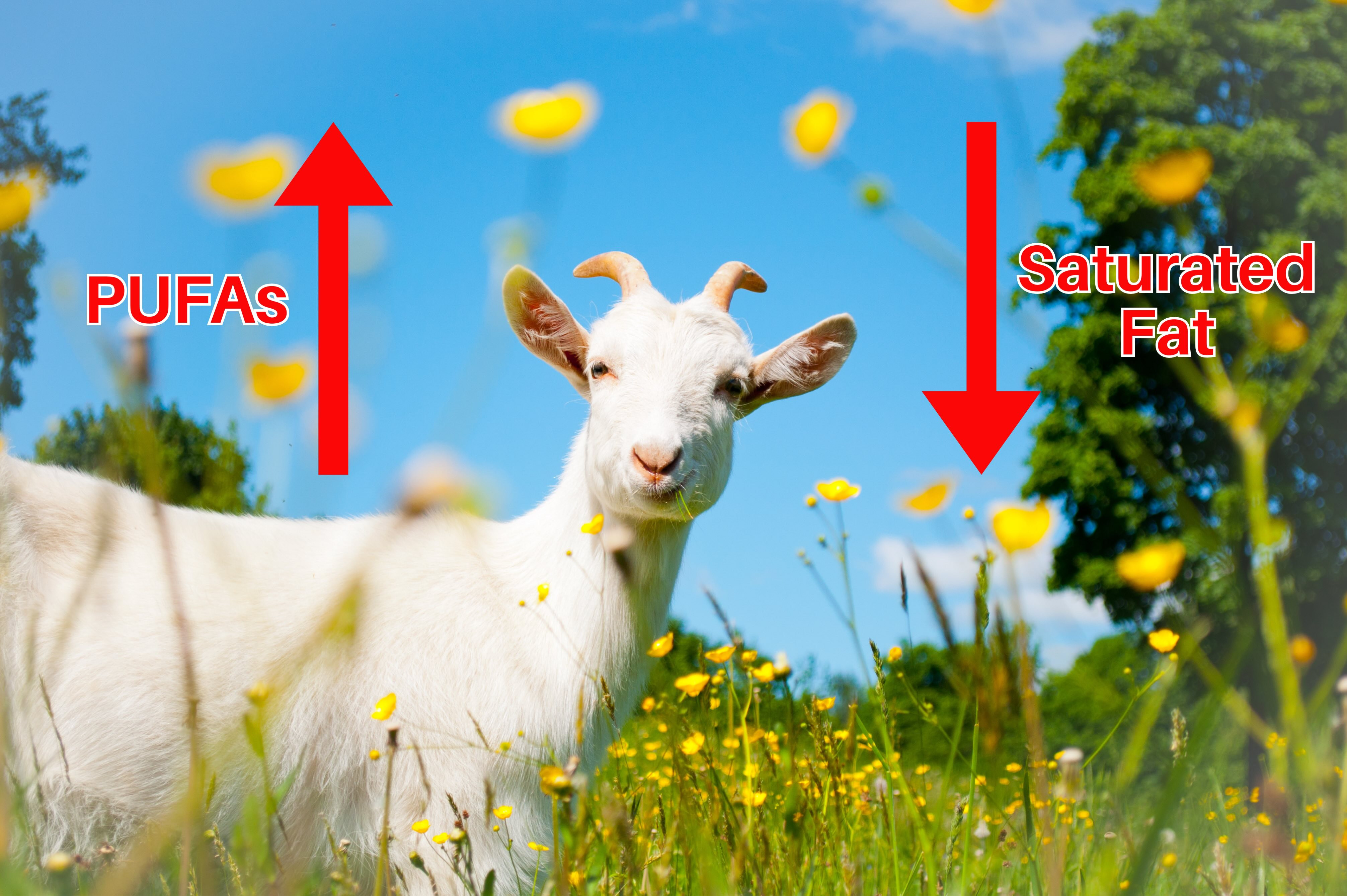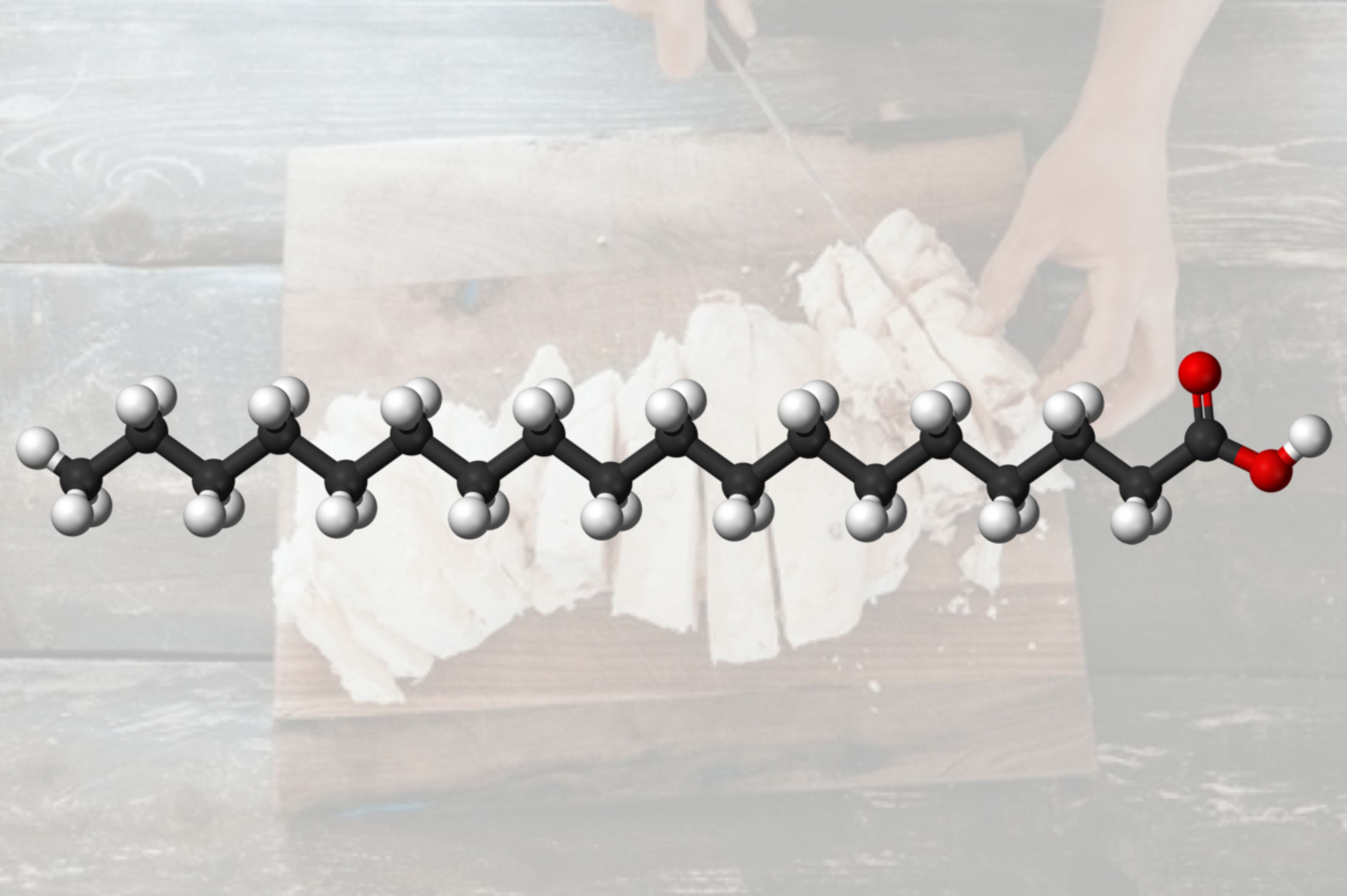Grass-Fed vs. Grain-Fed Beef: Why Grass-Fed is better for your health
posted on
November 2, 2024
What are the health differences between grass-fed and grain-fed beef?
In an era where food choices can significantly impact both personal and environmental health, the distinction between grass-fed and grain-fed beef has never been more relevant. While all beef provides essential nutrients, the way cattle are raised creates meaningful differences in the final product's nutritional profile and environmental impact. As consumers become more conscious about their food choices, understanding these differences becomes crucial for making informed decisions about the meat we put on our plates.
Grass-fed beef from regenerative farms is the healthier option due to:
1) less toxins and pharmaceutical interventions
2) more nutrients
3) healthier fats, and no fatty acid manipulation
4) meat from healthier animals without insulin resistance
If you would prefer to tune into the video/audio discussion of this article, instead of reading, you can tune in here:

The Tale of Two Systems: Understanding Modern Cattle Raising
The journey of beef from farm to plate follows two distinctly different paths in modern agriculture. Both grass-fed and grain-fed cattle begin life similarly - nursing from their mothers and grazing freely for their first 7-9 months. However, their paths diverge dramatically after this initial phase, leading to significant differences in the final product.
Conventional cattle are transferred to feedlots, often confined to small stalls where they receive a high energy, corn and soy-based diet (with other components that have the potential to alter the fatty acid profile of beef – not what we want! More about that later in the article).
These animals are rapidly fattened and typically sent to slaughter at 15-18 months, weighing 1,200-1,500 pounds. Imagine spending your days on the couch with little movement, eating processed foods your body wasn't really designed to consume – of course you would gain weight rapidly!
In contrast, grass-fed cattle continue their natural grazing lifestyle with regular movement, reaching slaughter weight more slowly - usually between 20-28 months at 1,000-1,300 pounds, depending on pasture quality and grazing management.
This difference represents more than just timing - it reflects two fundamentally different agricultural philosophies: regenerative versus conventional farming. The term 'conventional agriculture' is somewhat misleading, as this industrial approach, characterized by mass production methods and heavy use of synthetic chemicals, only became widespread in the mid-20th century (only about ~70 years ago!). Perhaps more accurate terms would be 'industrial agriculture' or 'degenerative agriculture,' standing in stark contrast to regenerative systems that work in harmony with natural processes.
Regenerative grazing practices represent a fundamental shift in livestock management. This approach, also known as Adaptive Multi-Paddock (AMP) grazing, involves rotating animals through multiple smaller paddocks within a pasture. This method mimics natural grazing patterns of wild herbivores and offers numerous environmental benefits:
- Enhanced soil health and fertility
- Increased biodiversity
- Improved carbon sequestration
- Better water retention
- Reduced parasite exposure for livestock
- Enhanced nutrient density in the final product
These practices create a virtuous cycle where healthier soil leads to more nutritious forage, which in turn produces healthier animals and more nutritious meat.

On the one hand with regenerative grazing, we have naturally raised animals who rarely get sick. This is because they eat a natural diet, have plenty of exercise and space, are moved to fresh patches of grass with fresh air, aren’t confined, and aren’t exposed to manure and parasites due to regular rotations of the livestock with moveable fencing. Animals raised this way do not need routine vaccinations or pharmaceuticals.
On the other hand, there are conventionally raised animals who are likely to get sick without pharmaceutical interventions. This is because they eat an unnatural diet when in the feedlot, live in crowded living spaces, are not able to exercise or breathe fresh air. Animals raised this way would not produce food or survive without routine vaccinations and antibiotics.
So let's now dive into the four main differences between grass-fed and grain-fed beef:
1. Less Toxins
One of the most compelling reasons to choose grass-fed beef lies in what you won't find in it. Feedlot operations, or CAFOs (Concentrated Animal Feeding Operations), rely heavily on chemical interventions to maintain animal health and manage pests in crowded conditions.
“Feed yards house thousands of cattle in relatively small areas, approximately 20 sq. meters per head. To maintain cattle health and maximize growth among high densities of animals, many countries (USA, Australia, South Africa, Japan, Mexico, New Zealand, and Chile) rely heavily on veterinary pharmaceuticals. In these countries, more than 90% of all feed yards treat cattle with antibiotics, 85% use β−agonists, and over 80% use synthetic anabolic steroids. Antibiotics, β− agonists, and melengestrol acetate (progesterone-like steroid) are administered to cattle via feed, whereas the primary route of administration for other growth-promoting steroids is slow release implant.”[1]
The chemical exposure doesn't stop there. The Environmental Working Group estimates that a staggering 167 million pounds of pesticides are used annually just to grow animal feed (GMO and non GMO) in the United States. Even more concerning, the allowed glyphosate residues in animal feed can be more than 100 times higher than what's permitted in human-consumed grains, with red meat allowed to contain 20 times more than most plant crops.[2]
These chemicals don't simply disappear. Pesticides can accumulate in animals' fatty tissues over time[3], creating a concentrated source of exposure for consumers. Additionally, the prevalence of GMO crops in livestock feed introduces another layer of potential concern as trace amounts of these substances could potentially be present in the final beef product. Currently, there are no requirements to label beef products as containing GMOs based on the animal's feed.[4]
The CAFO environment itself necessitates numerous chemical interventions:
- Insecticides for fly control
- Dewormers for parasite management
- Vaccines and antibiotics for disease prevention (a long list of ‘routine vaccinations’ are very common in conventional beef systems)
- Rodenticides and other pest control agents
The confined conditions of feedlots often necessitate routine use of antibiotics, with water bowls being a common administration route. An estimated 50-60% of feedlot cattle receive low-level antibiotics during feeding[5], used both for growth promotion and disease prevention in crowded conditions[6]. This routine antibiotic use contributes to growing concerns about antibiotic resistance in both animal and human populations.
Common antibiotics used in cattle feedlots include[7]
- Tetracyclines (e.g. oxytetracycline)
- Macrolides (e.g. tylosin, erythromycin)
- Florfenicol (Florkem)
- Tulathromycin (Draxxin)
- Ceftiofur (Excede)
Antibiotic-resistant bacteria have been found in feedlot water bowls, even before cattle arrive, indicating environmental reservoirs.[7] Moreover, the water bowls can become hotspots for the spread of antibiotic resistance genes between different bacterial species.[8] Resistant bacteria in water bowls may then transfer resistance genes to pathogens that cause bovine respiratory disease.[7]
To prevent disease outbreaks, a long vaccination list is utilized in the conventional system.
Here's a typical vaccine schedule for a calf destined for a feedlot:[9,10,11,12]
Pre-Weaning (2-4 months of age)
- 7-way clostridial vaccine (Blackleg)
- Modified Live Virus (MLV) vaccine for IBR, BVD, PI3, BRSV
- Mannheimia/Pasteurella vaccine
Pre-Weaning Booster (4-5 weeks before weaning)
- Booster MLV vaccine for IBR, BVD, PI3, BRSV
- Pasteurella vaccine
- Deworming treatment
At Weaning
- Booster MLV vaccine for IBR, BVD, PI3, BRSV
- 7-way clostridial vaccine booster
- 5-way Leptospirosis vaccine
- Deworming treatment
Post-Weaning/Pre-Feedlot Entry (3-4 weeks after weaning)
A second booster vaccination should be given:
- MLV vaccine for IBR, BVD, PI3, BRSV
- Mannheimia/Pasteurella vaccine
On Arrival at Feedlot
- MLV vaccine for IBR, PI3, BVD, BRSV
- 7-way Clostridial vaccine (if not previously given)
- Histophilus somni vaccine
- Mannheimia haemolytica vaccine
There there is a whole separate list for the momma cows.
It's important to note that practices may vary between different countries and regions, and efforts are being made in some areas to reduce antibiotic use in livestock production.
It is also important to note that there is a huge difference in using pharmaceutical interventions to keep an animal alive or on an as-needed basis, versus a large list of ‘routine vaccinations’ or ‘regular antibiotics’ to prevent future health problems due to infrastructure set up.
This chemical-dependent approach starkly contrasts with regenerative farming practices that focus on preventing health issues through natural management methods.
This higher toxin load can lead to hormonal disruption.
Perhaps most concerning is the potential endocrine-disrupting effects of conventionally raised beef.
Certain pesticides used in feed production are known endocrine disruptors, which are chemicals that interfere with the endocrine system, which regulates hormones in the body. These chemicals can mimic, block, or alter natural hormones, potentially causing developmental, reproductive, neurological, and immune issues.
In addition to pesticides, phytoestrogen levels in feedlot and grain-finished beef can be higher – causing further disruption to endocrine systems. Phytoestrogens are plant-derived compounds that can mimic or influence estrogen activity in the body (and we often do not need more estrogen in modern times). Phytoestrogens in high doses may cause hormonal abnormalities in both men and women as well as children.[13]
The data promoting the use of phytoestrogen consumption (like flax) is from epidemiological studies and have not been replicated in a clinical setting. And there is data in the thermography world demonstrating that a high phytoestrogen diet causes more complications for cancer.[14]
Grain-based feeds, particularly those containing legumes like soybeans, or supplemental flax seeds, can be high in phytoestrogens. Cattle in feedlots are often fed diets that include higher levels of phytoestrogens, leading to higher phytoestrogen exposure compared to grass-fed cattle.[15]
Phytoestrogens consumed by livestock can accumulate in their tissues, including meat and fat. The concentration of these compounds in animal products depends on the amount and duration of exposure through feed.[16]
Grain-fed cattle may also be exposed to other estrogenic compounds beyond phytoestrogens. For example, zearalenone, a mold toxin that can act as a mycoestrogen, may be present in moldy grains fed to feedlot cattle.
While estrogen-mimicking compounds are generally low in beef products compared to some other food sources, grain-fed beef may have higher levels of estrogenic compounds due to the feed composition. So if you are struggling with estrogen dominance symptoms, being mindful of beef sourcing can help with hormonal rebalance. Grass-fed beef is generally expected to have lower levels of phytoestrogens and other estrogenic compounds due to the animals' diet being primarily composed of grasses rather than grains and legumes.
While there aren’t many studies investigating the quantitative comparison of phytoestrogen levels in feedlot versus grass-fed beef, some data suggest that grain-finished beef from feedlots is more likely to contain higher levels of phytoestrogens and other estrogenic compounds in their meat and fat compared to grass-fed beef. This is primarily due to the differences in feed composition and potential exposure to various estrogenic substances in the feedlot environment.
2. More Nutrients
Grass-fed beef doesn't just have fewer undesirable compounds - it offers superior nutrition. Studies have found nearly twice the riboflavin and three times the thiamine concentrations in grass-finished beef compared to grain-finished.[17] Moreover, grass-fed beef can contain up to four times more Vitamin E than beef from feedlot cattle.[18] Further, the conjugated linoleic acid (CLA) content is particularly impressive, with levels 1.5 to 3 times higher in pasture-raised meat and dairy products.[19]
CLA has anti-carcinogenic and anti-adipogenic properties. The benefits extend to consumers, as research shows that eating pasture-raised animal products elevates serum CLA concentrations in humans.[20]
One of the most fascinating aspects of grass-fed beef is its phytonutrient content. While we typically associate phytochemicals with plant foods, meat from pastured animals contains significant levels of these beneficial compounds.[21]
Phytochemicals are secondary compounds found in fruits and vegetables that are well documented to have a number of health benefits. For example, terpenoids are a class of phytochemicals that have anti-inflammatory, anti-viral, and anti-carcinogenic properties.[21] Polyphenols are well documented to exert strong in vivo anti-inflammatory effects in both animals and humans. Other therapeutic benefits of phenols include protection again various cancers, hepatic disorders, cardiovascular disease, neurodegenerative diseases, type 2 diabetes, obesity, improved immune function, and gut microbial composition.[21]
Importantly, the phytonutrient content varies significantly based on grazing practices. Animals grazing on diverse pastures accumulate both higher amounts and a wider variety of phytochemicals in their meat compared to those on monoculture pastures or grain-based diets.[21] This highlights the importance of not just grass-feeding, but ensuring cattle have access to diverse, nutrient-rich pastures.

“Animals grazing more botanically diverse pastures accumulate both higher amounts and a wider variety … phytochemicals..in their meat and milk compared to animals grazing non-diverse (i.e., monoculture) pastures, while concentrations of phytochemicals are further reduced—and often remain undetected—in the meat and milk of animals fed grain-based diets in feedlots.”[21]
While total phytonutrient concentration is higher in plant foods, the contribution of phytochemicals from pasture-raised meat and milk to overall dietary intake should not be underestimated. Consuming plant foods is of course important, but consuming phytochemically-rich meat will provide us with a spectrum of phytonutrients from classes of plants otherwise not readily consumed by humans.
3. Healthier Fats
The fat composition of beef tells another important story. Before we dive into types of fats, let’s first address the overall fat content. Feedlots have significantly increased the fat composition of ruminant animals like cows, resulting in meat that’s much fattier than what was historically consumed. Wild animals, by contrast, are naturally lean. Modern feedlots rely on energy-dense feeds and restrict livestock movement, promoting rapid weight gain and increased fat deposits. This raises the question: Are today’s super-fatty ribeye steaks from CAFO beef truly “ancestral”?
Now when it comes to the type of fat in beef, this is where beef differ from chickens and pigs (who have a single stomach). The fat of all ruminant animals have relatively low levels of linoleic acid (LA), even if they are eating some higher Omega 6 PUFA sources. This is because their stomach has a ‘biohydrogenation chamber’ that contains bacteria that can convert the high LA fat they eat from grains and seeds into saturated and monounsaturated fats.
While all ruminant animals naturally convert some dietary fats through biohydrogenation, the final fatty acid profile still differs between grass-fed and grain-fed beef. Research by the Weston A. Price Foundation found that grass-fed tallow contains 45% less total polyunsaturated fatty acids (PUFA), 66% less omega-6 linoleic acid, and 36% more saturated fat stearic acid.[22] This fat composition difference becomes particularly relevant in the context of modern diets, which already often contain excessive amounts of omega-6 fatty acids.
What’s more – there is ongoing research on how the PUFA content of cows can be increased even more! Based on the false premise that saturated fats are bad for us, and PUFAs are good for us.
They first changed our fatty acid intake by swapping traditional animal fats with seed oils (vegetable oils). Then, they changed the types of fat in pigs and chickens (increased PUFA content) by increasing the PUFA content of livestock feed. And now, they are changing the fatty acid content of beef and dairy through rumen bypass methods.
This research of dairy fatty acid manipulation started in the 1980s - “Interest in manipulating the fat content of milk was in full force entering the 1980s. The Dietary Guidelines for Americans published in 1980 by the US Department of Health and Human Services and the Department of Agriculture (USDA) emphasized reductions in total fat, saturated fat, and cholesterol.”[23]
Rumen bypass or "rumen escape" technology is used to protect proteins and lipids from degradation in the rumen, allowing them to be digested more efficiently in the small intestine and altering the fatty acid composition.[24] Attempting to bypass the natural biohydrogenation process in the rumen!
A few methods that can lead to PUFAs bypassing the rumen include high levels of distillers grains in the diet[25], calcium soaps of fatty acids to protect PUFAs from the ruminal biohydrogenation[26], and the inclusion of various other whole, treated or protected oilseeds like whole cottonseed, roasted soybeans, canola seed, sunflower seeds, flaxseeds.[27] Calcium soaps has been used with soybean oil (rich in linoleic acid) to maximize the delivery of omega-6 fatty acids to the duodenum for absorption.[28]
The use of rumen bypass techniques allow for more of the dietary linoleic acid to be absorbed intact and incorporated into the beef[29] – not what we want!
Let’s dive into distillers grains a little bit more. These aren’t specifically ‘rumen bypass methods’, but it is a much larger concentration Distiller grains are a co-product of the ethanol production process and are used as a high-protein, high-energy feed ingredient for cattle, particularly in beef feedlots. Most distiller grains used in beef feedlots come from GMO corn because it is widely grown and economically viable. Corn is subsidized by the government, so it is a cheap feed source. Corn consists of starch (carb), fat, fiber and protein, with the starch being the largest component of corn. For ethanol production, the starch is removed, so the DDGS (dried distiller grains with solubles) consists of just fat, fiber and protein.
However, distiller grains generally contain more fat, mostly in the form of PUFAs, than whole corn (3X more or higher) due to the concentration effect from the ethanol production process. While some of these unsaturated fats undergo biohydrogenation in the rumen, not all of them are fully converted to saturated fats since it is such an unnaturally high amount of PUFAs.
"Feeding with DG [distiller grains] influences beef colour; nevertheless, a relationship between the level of inclusion and colour development has not been established yet. In addition, feeding DG-inclusion diets sometimes increases meat discoloration during retail display. Also, the composition of fatty acids is modified since total polyunsaturated fatty acid content in meat increases with the inclusion of DG in finishing diets. This increment in polyunsaturated fatty acid content is likely to contribute to lipid oxidation processes and might be related to meat discoloration due to myoglobin oxidation."[30]
"Feeding DGS may lead to different fatty acid profile of beef when compared to corn. Increasing polyunsaturated fatty acids such as C18:3 ω3 improve nutritional values of beef. However possible detrimental effects on lipid stability and color may occur since polyunsaturated fatty acids such as ω3s are more prone to oxidation than saturated fatty acids (De Mello et al., 2018)." [31]
Some studies do not measure the linoleic acid change in the meat, but it is likely that feeding rumen-protected oilseeds would increase the linoleic acid content beyond normal confinement beef levels.
There is also research into using transgenic techniques to modify fat content in animal products, including beef[32], which involves genetically modifying the animals themselves.
Why can’t we just leave Mother Nature alone? We will never out smart her!
4. Healthier Animals
The health of the animal directly impacts the quality of its meat. Research shows that pen-finished animals display elevated glucose metabolites, triglycerides, markers of oxidative stress, and proteolysis compared to pasture-finished animals.[33,34] Extended grain feeding can lead to insulin resistance in ruminants[35], and studies have documented different energetic levels between grass-fed and grain-fed animals.[36]

While the full implications for human health are still being studied, some research suggests that consuming products from pasture-fed cattle may have different metabolic effects compared to those from grain-fed cattle
[37]. This raises important questions about how the metabolic health of livestock might influence the metabolic health of consumers.
When an animal has poor metabolic health, detoxification systems are downregulated. Add on top of that, higher bacterial and toxin load when in confinement, and that is a recipe to get sick!
So of course a long list of ‘routine vaccinations’ and regular antibiotic use are required to maintain health!
But Grass-Fed Requires more space!
This oversimplified view misses crucial nuances in grass-fed farming – management practices make all the difference!
As highlighted in van Vliet et al. (2021): "Management practices that use ecological principles can increase the carrying capacity of livestock by 50–70% compared to continuous (largely unmanaged) grazing... There is also potential for increased carrying capacity from multi-species grazing with little dietary overlap. For instance, integrating cattle with sheep, goats, and pigs and/or potentially other feed-conversion-efficient herbivores such as ducks, geese, and rabbits can improve animal productivity compared to grazing single species... This synergy is achieved because different species exploit different ecological niches and one species can increase resource availability for another species... Greater diversification of livestock can allow for more efficient use of the resources provided by a particular ecosystem. For example, goats and sheep readily eat species of forbs, shrubs and trees that large herbivores like cattle and bison often avoid, while larger herbivores can better utilize lower quality forage compared to small herbivores such as sheep and goats."[21]
The untapped potential is enormous. Most pastures are underutilized, and we're overlooking a major opportunity: millions of acres of row crop fields sit idle for 4-8 months each year. By introducing cover crops and grazing cattle between harvests, we could dramatically increase available pastureland while enhancing soil health and agricultural sustainability.
Rather than cramming more animals into industrial facilities, let's embrace holistic management practices. By enhancing pasture productivity and creating integrated farming enterprises, we can boost both environmental sustainability and farmer profitability – a win-win solution that benefits animals, land, and agricultural communities.
According to the Food and Agriculture Organization (FAO), current agricultural output is sufficient to meet the caloric needs of approximately 12 billion people, while the global population is around 8 billion, indicating a surplus of food production.[38,39]
Meaning, already produce enough food to feed 1.5 times the world population – we don’t need to focus on maximizing quantity at the expense of quality! Focus instead needs to be improving infrastructure and distribution.
Making an Informed Choice
The price difference between conventional and grass-fed beef often raises eyebrows, but understanding the "why" behind this cost difference reveals the true value proposition. Grass-fed cattle take longer to reach market weight (20-28 months versus 15-18 months for grain-fed), requiring more time, land, and careful management. This extended timeline, combined with the intensive pasture management needed for regenerative grazing (daily moves, if not 2-3 times a day!), contributes to the higher price point.
However, when we consider the broader picture - lower toxin exposure, enhanced nutrient density, superior fat composition, and healthier animals - the premium price of grass-fed beef becomes an investment in both personal and environmental health rather than merely an expense. While all beef provides essential nutrients like zinc, B vitamins, and creatine, grass-fed beef from regenerative farming systems offers these nutrients in a package with fewer concerning compounds and additional beneficial substances like phytonutrients.
For those working within budget constraints, it's reassuring to know that conventional beef still provides valuable nutrition. The choice doesn't have to be all-or-nothing - incorporating grass-fed beef when possible while choosing conventional beef at other times can be a practical approach to balancing nutrition, sustainability, and budget considerations. The key is making informed decisions based on your personal circumstances while understanding the real differences between these two products.
The higher cost of grass-fed beef reflects not just the extended raising time, but also the investment in regenerative farming practices that benefit soil health, animal welfare, and ultimately, human health. When viewed through this lens, the price premium becomes more understandable - it's the true cost of producing beef in harmony with natural systems rather than forcing nature to conform to industrial efficiency.
Here at Nourish Food Club, we deliver 100% grass-fed, regeneratively raised beef directly to your home, making sustainable choices convenient no matter where you live.
Stay saturated,
Farmer Ash
(Ashley Armstrong)



